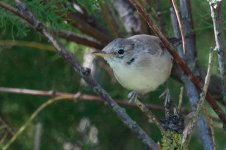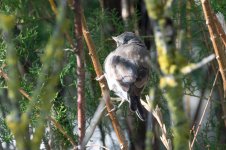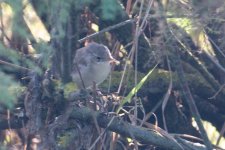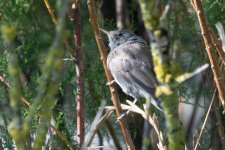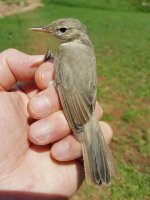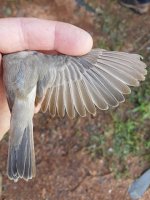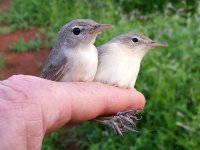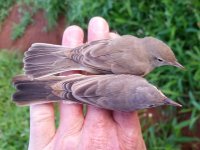Perhaps I was also hasty in ruling out Sykes's. I felt, having looked at the first set of images, that general upper part coloration looked better for EOW, as did the dark base colour of the primaries (fringes are pale) and the apparently dark tail. I also felt that the bill looked too long and strong for Sykes's but acknowledge that there is overlap and that the images I was basing that conclusion on show the bird craning upwards, exaggerating the bill size. The second set of images give a slightly different impression, however. It doesn't help that it's a very tatty bird.
As far as I can tell, both species can have a pale panel on the secondaries, although it's apparently more prominent on EOW. Pale fringes to the primaries are more of an EOW feature, I think. I'm not aware of significant differences in P1 length or lower mandible markings. Roland makes an interesting point about where the emarginations fall but going into that level of detail goes above my head somewhat.
As far as I can tell, both species can have a pale panel on the secondaries, although it's apparently more prominent on EOW. Pale fringes to the primaries are more of an EOW feature, I think. I'm not aware of significant differences in P1 length or lower mandible markings. Roland makes an interesting point about where the emarginations fall but going into that level of detail goes above my head somewhat.
Last edited:





